Articles Common Upper Back and Chest Injuries
We have compiled a list of common upper back and chest injuries. It is important to accurately diagnose and identify the cause of these injuries as this will direct treatment to ensure the best outcomes.
Common Upper Back and Chest Injuries- Postural/Muscular Pain
Upper back pain caused by sedentary lifestyles are becoming more and more prevalent. Holding static postures (i.e. prolonged sitting) can cause the upper back muscles to become over worked and fatigued thereby placing more strain on the joints and ligaments. This can give rise to headaches, neck, upper back and shoulder pain. As a precaution it is important change your posture frequently, have your work station set up correctly and have regular breaks from your desk.
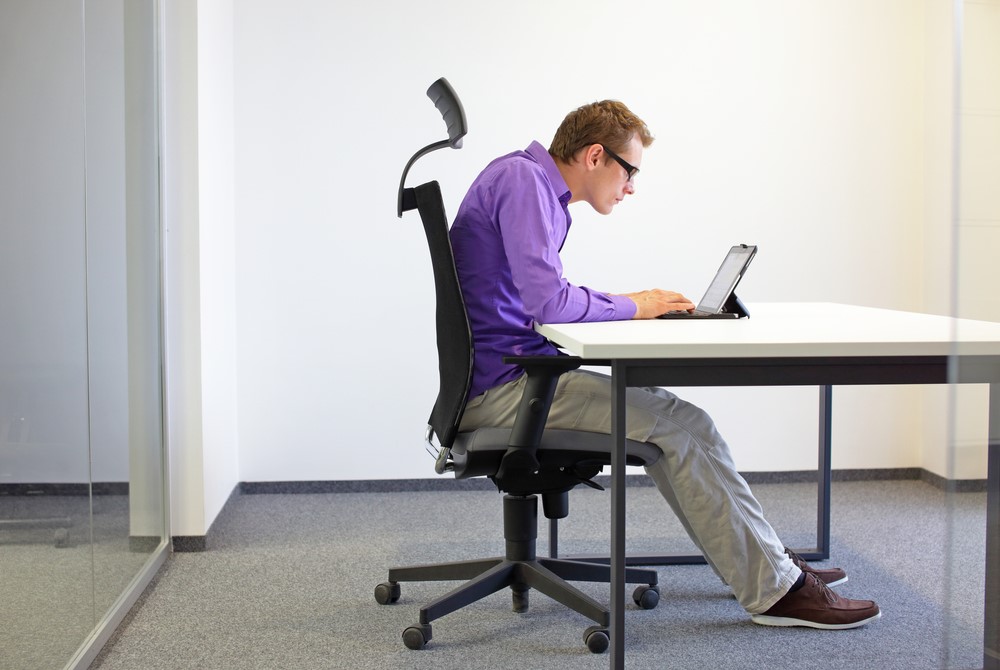
Common Upper Back and Chest Injuries- Joint Stiffness (Facet and Rib Joints)
Compared to the neck and lower back the upper back has a lot less movement. This is because the rib cage attaches directly onto this section of the spine. The joints and over lying muscles of the upper back are particularly prone to becoming stiff and restricted. This can be due to overuse (i.e. repeated lifting), trauma (i.e. heavy lifting) or poor posture (i.e. prolonged sitting). Symptoms can include pain/discomfort between the shoulder blades, pain/discomfort with deep breathing and a restriction of movement of the neck, shoulders and/or upper back.
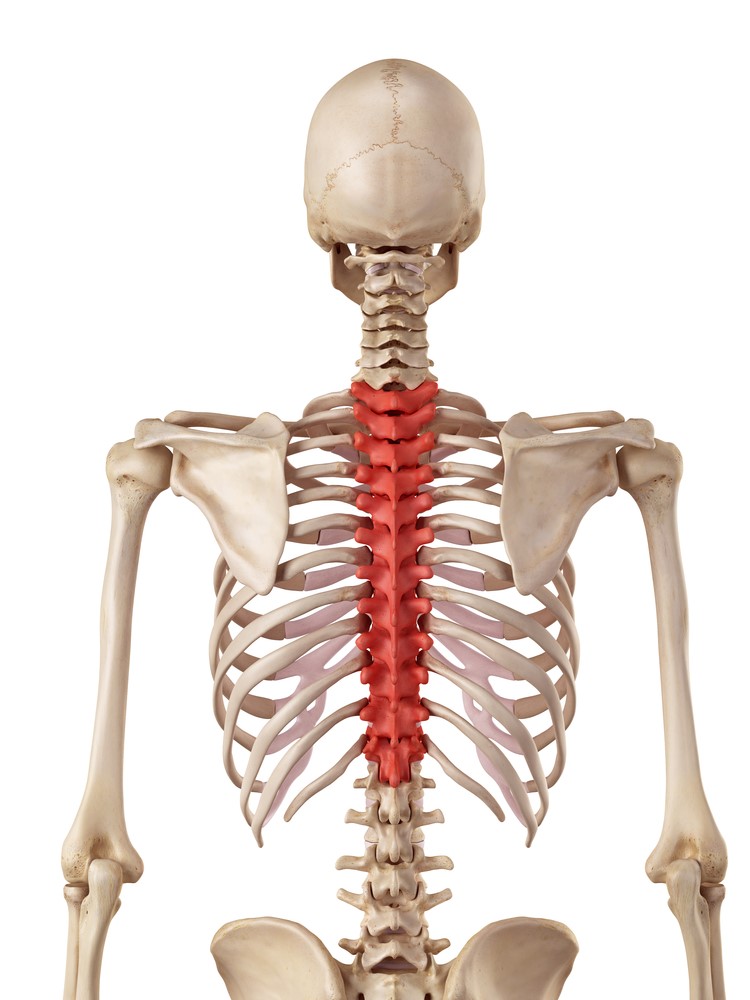
Common Upper Back and Chest Injuries- Osteoarthritis
Wearing away of the cartilage between the joints in the upper back (facet joints) can lead of osteoarthritis. This condition is most commonly observed in older individuals and typically complain of upper back stiffness and movement restriction.
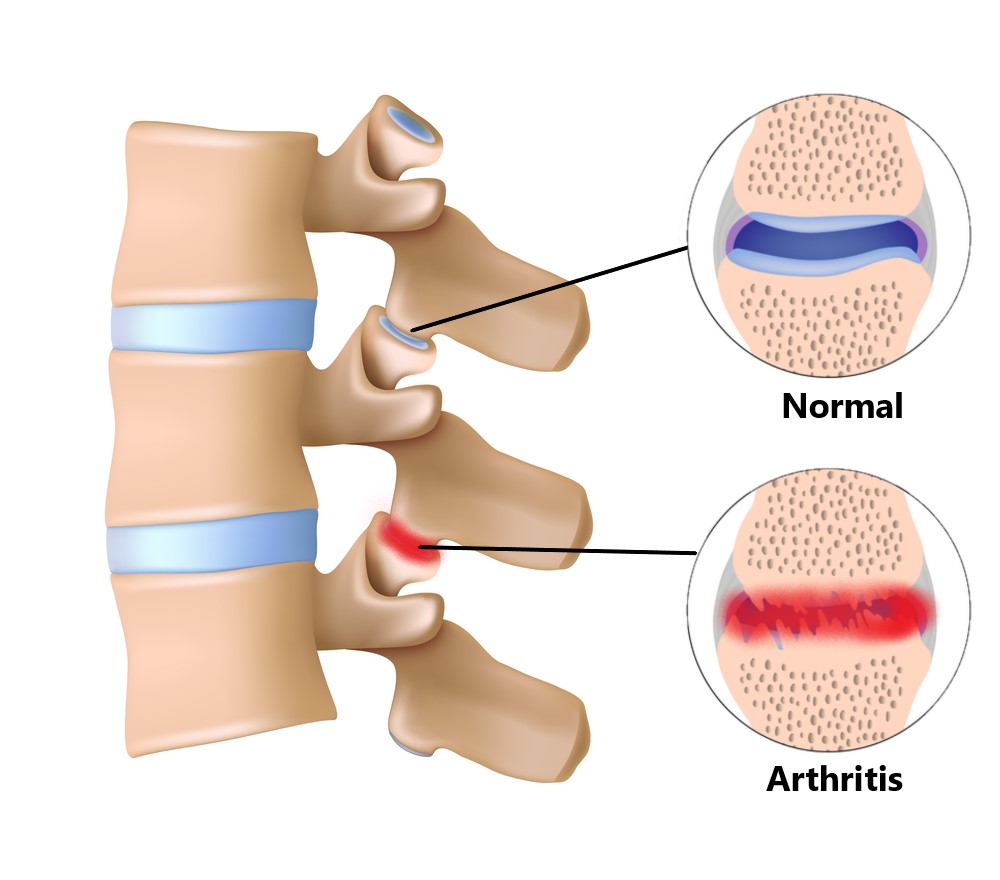
Common Upper Back and Chest Injuries- Osteoporosis (OP)
OP is a process where a bone becomes less dense and more prone to fractures (much like a brick crumbling under load). OP in the upper back can cause weakening and deterioration of the front portion of a vertebrae, this is known as a ‘wedge fracture’ due the its side profile appearance. Multiple wedge fractures can result in a curved “hunched’ appearance of the upper spine. This is most commonly seen in older female populations. Modifiable lifestyle factors can slow down the progression of OP and reduce the risk of developing fractures (please see “Bones” article)
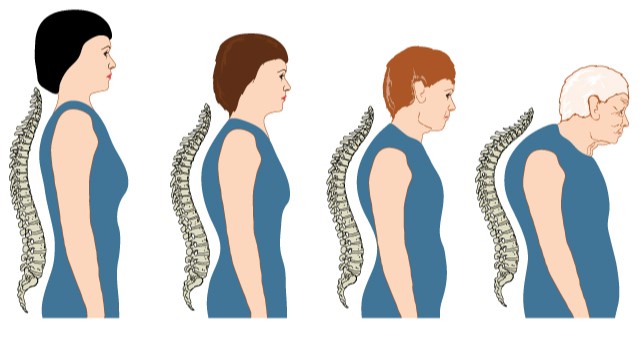
Common Upper Back and Chest Injuries- Intervertebral Disc (IVD) Injuries
As previously mentioned the upper back has significantly less movement compared to the other sections of the spine. The good news is IVD injuries in the upper back are far less commonly seen. Annular tears, disc bulges, disc herniations and disc desiccation are terms frequently found in scan reports used to describe injuries to the IVD. These findings are a normal part of the ageing process and often observed in people with no symptoms at all. Only in extremely rare and severe circumstances would surgery be considered. Most IVD injures are best managed with conservative physiotherapy treatment.
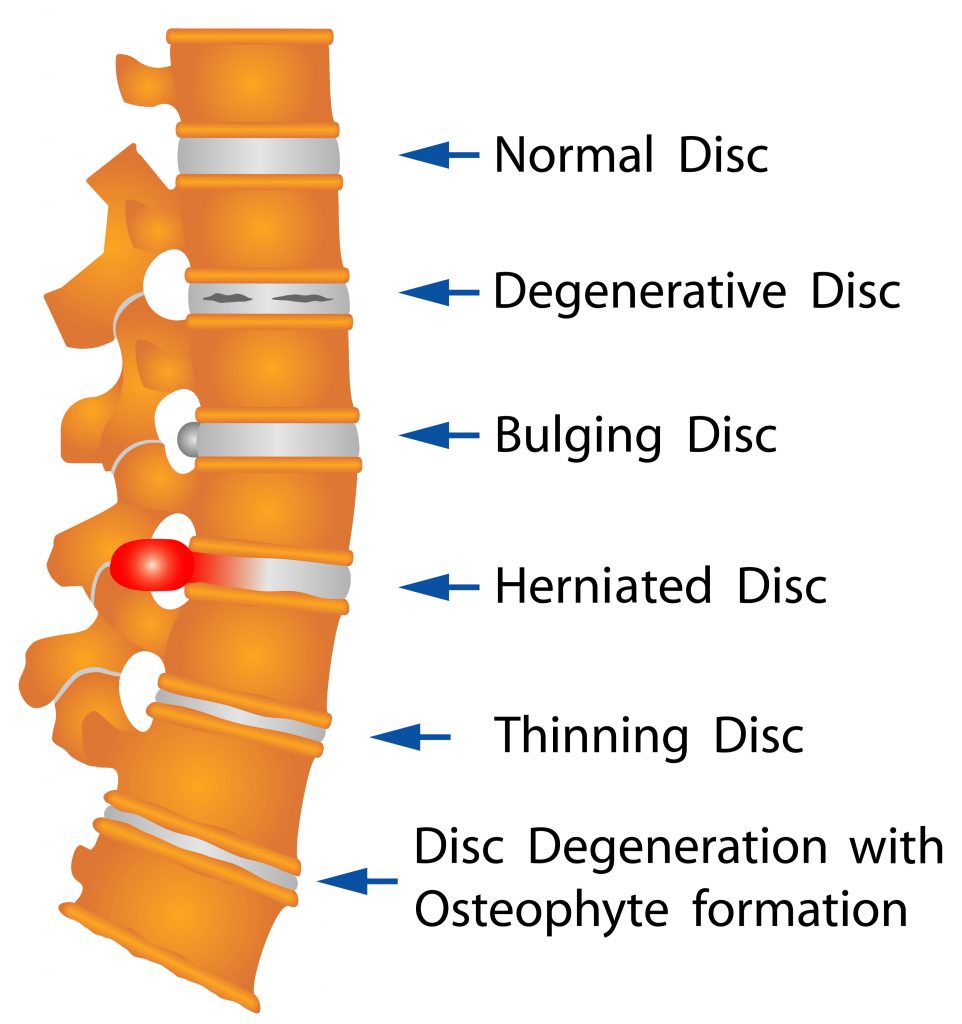
Common Upper Back and Chest Injuries- Scheuermann’s Disease
Scheuermann’s Disease is a developmental condition most commonly observed in teenagers and characterised by abnormal “hunching” of the upper back. This is due to a developmental abnormality where the rear portion of a vertebrae grows faster than the front giving it a “wedged” side profile appearance (much like in OP). This condition is typically self limiting and will stop progressing once the spine has reached full maturity. Unfortunately, the causes are unknown. Treatment focuses on pain management, maintaining mobility and strength and limiting the progression of the disease. Only in extremely rare and severe circumstances would surgery be considered (i.e. compromise of heart and lung function).
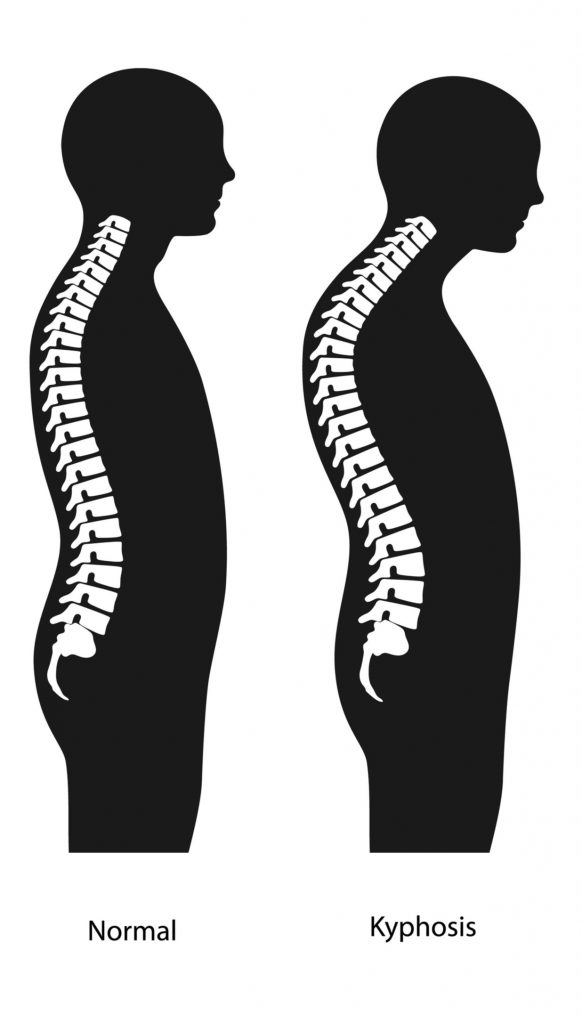
Common Upper Back and Chest Injuries- Scoliosis
A scoliosis is an abnormal curvature of the spine. Affected individuals often appear to stand in asymmetrical positions where the shoulders and trunk are not even. There are different types of scoliosis:
- Non-Structural Scoliosis, the deformity of the spine is not fixed, does not progress during development and can be corrected. Muscle imbalances and uneven leg length often contribute to this problem and can be easily modified.
- Structural Scoliosis, the deformity of the spine is fixed and can progress during development.
A Structural Scoliosis can be present from birth or gradually develop during the childhood/teenage years. Causes include:
- anatomical abnormalities of the spine (i.e. abnormal bone growth)
- neuromuscular disorders ( i.e. cerebral palsy)
- weak ligaments/joints/tendons
- diseases of the bone
- unknown causes/Idiopathic Scoliosis
Of these, Idiopathic Scoliosis is the most common typically affecting females between the ages of 10-18 years.
Most cases are mild and will stop progressing as the spine reaches full maturity. X-rays are often required to enable monitoring of the disease. The degree of spinal curvature and age of the individual determines what type of treatment is required. Surgical intervention is rare and only considered in specific situations (i.e. severe spinal curvature, deterioration of spinal alignment, compromise of lung and heart function). Physiotherapy treatment can be beneficial to minimise the impact of this condition.
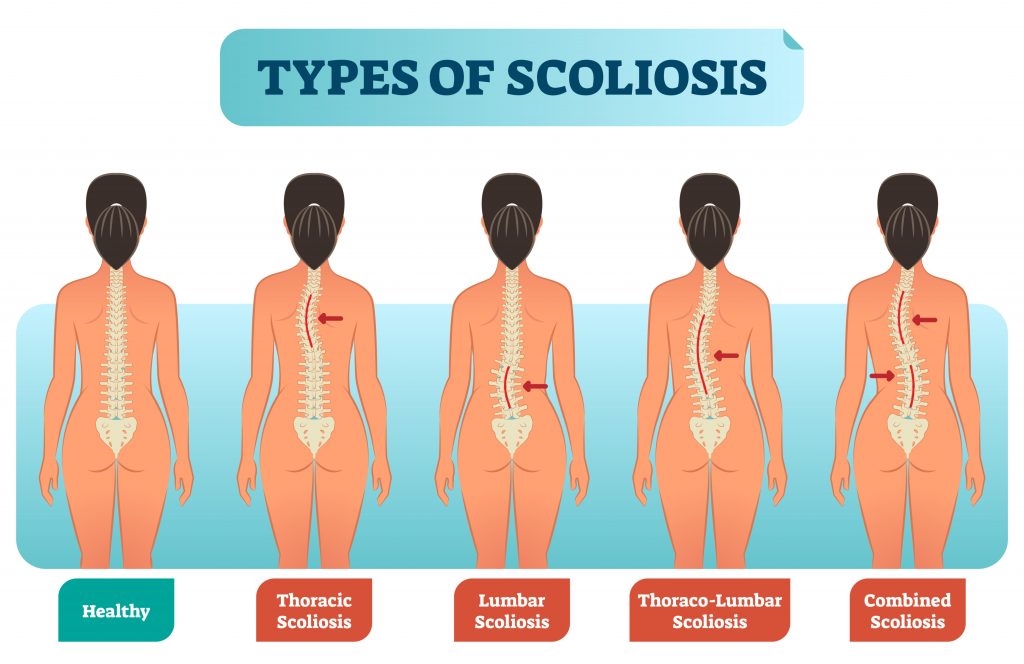
Common Upper Back and Chest Injuries- Rib Fractures/Rib Cartilage Strain
Rib fractures and cartilage strains typically occur following direct impact such as a fall, tackle or car accident. Individuals who have weaker bones (i.e. osteoporosis, cancer) can also develop rib fractures from forcefully coughing, heavy lifting and repeated movements (i.e. pull starting a lawn mower). Symptoms can include a sudden onset of severe rib pain, restricted movement of the arms, trunk and neck and difficulty breathing. This condition is normally managed conservatively. Surgical intervention is extremely rare and only indicated in situations where lung function could be significantly compromised.
Individuals who have sustained a rib fracture or cartilage strain are at a higher risk of developing pneumonia. This is due to difficulties with deep breathing and coughing. As a precaution, it is important to minimise flat lying positions, walk frequently and do regular deep breathing and coughing exercises. Using a pillow to support the wounded area during deep breathing and coughing and wearing a rib brace during daily activities can help to lessen the amount of pain.
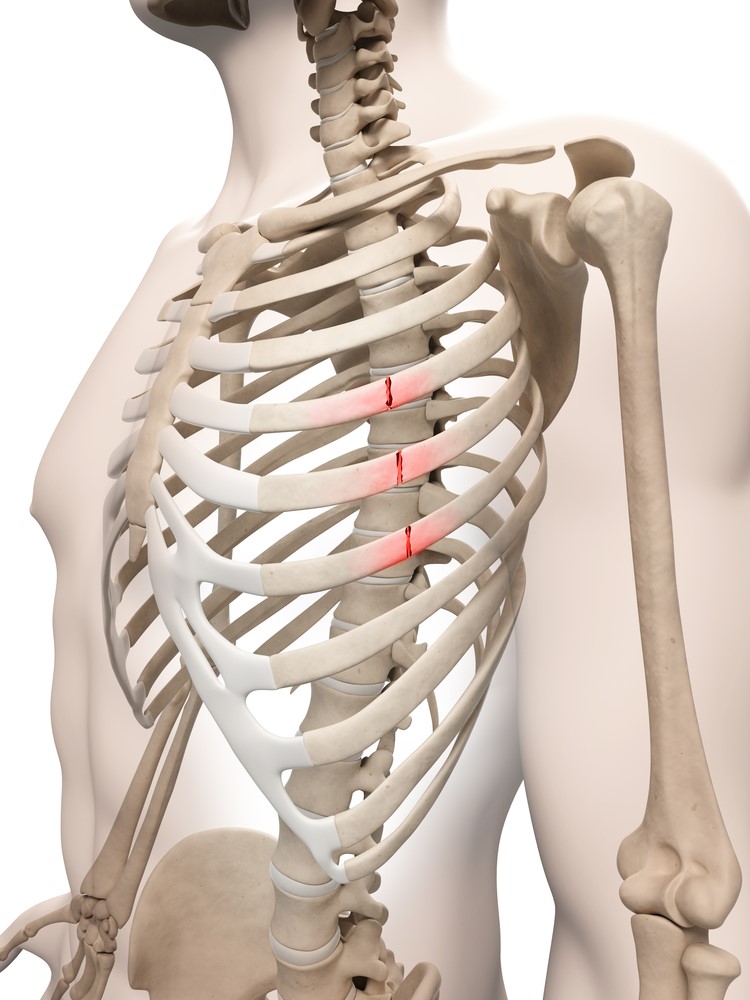
Common Upper Back and Chest Injuries- Angina
Angina is chest pain that occurs due to a lack of oxygen being delivered to muscles of the heart. Symptoms can include:
- pain/tightness/heaviness over the chest
- pain between the shoulder blades
- neck and/or jaw pain
- pain into one or both upper limbs (typically the left)
Other accompanying symptoms can also include:
- shortness of breath
- fatigue
- nausea
- uncontrolled sweating
- dizziness
Angina can be triggered by stress, physical exertion and cold weather. These symptoms are very distinctive and should not be mistaken for pain arising from musculoskeletal causes. It is important to seek urgent medical attention if you suspect you may be experiencing any symptoms of angina.
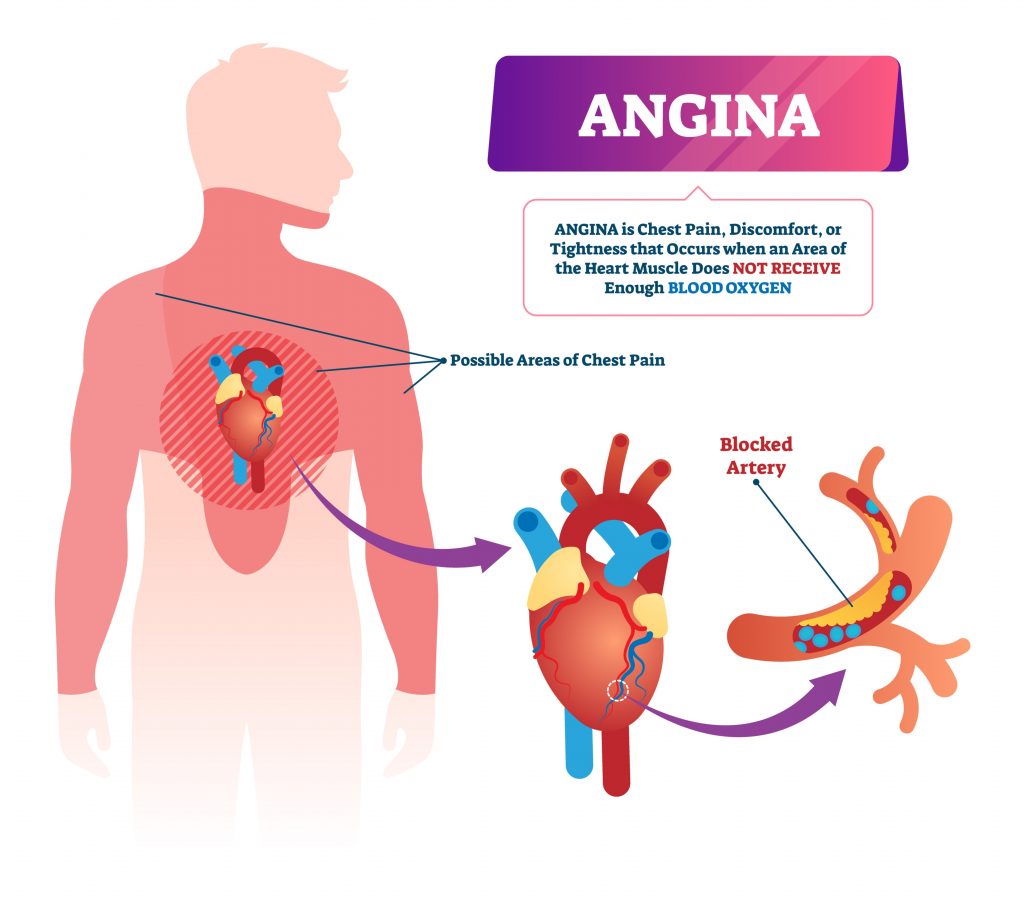
Please keep in mind the information provided is general in nature and should not be used as a substitute to consult your treating health professional. If you have any specific questions or require assistance with your individual treatment requirements please do not hesitate to contact MyFamily Physio Mona Vale, Northern Beaches Sydney.
Related Articles